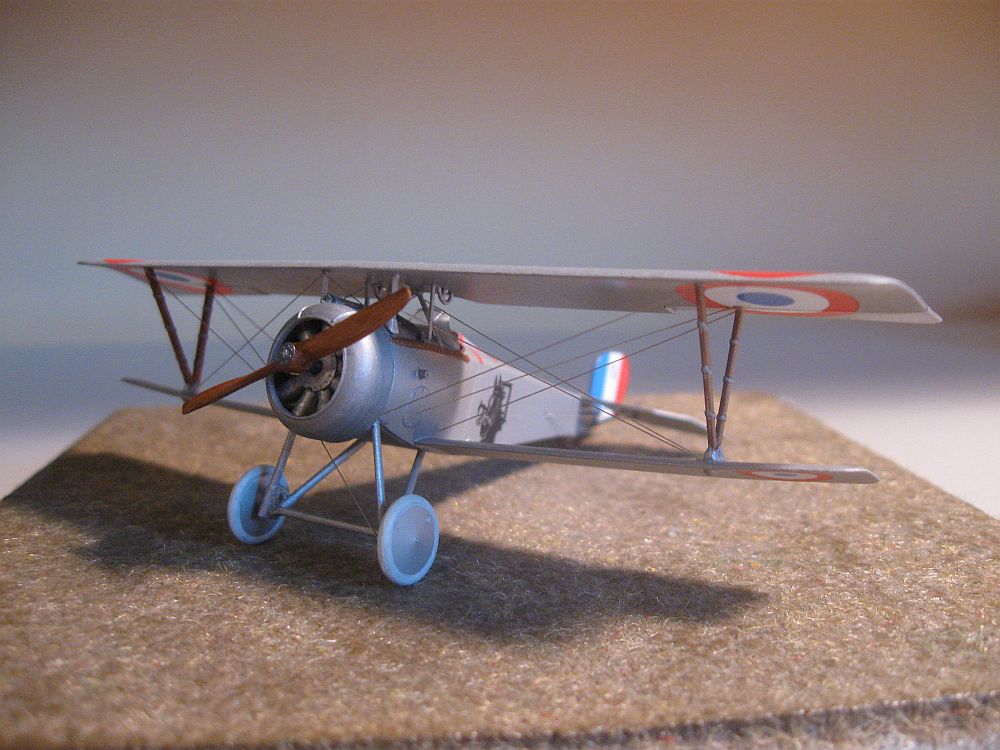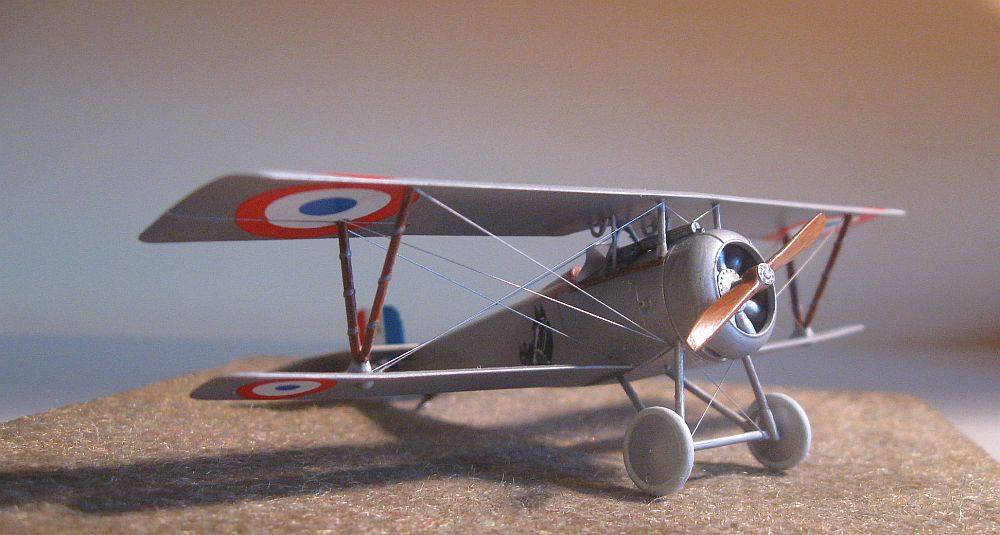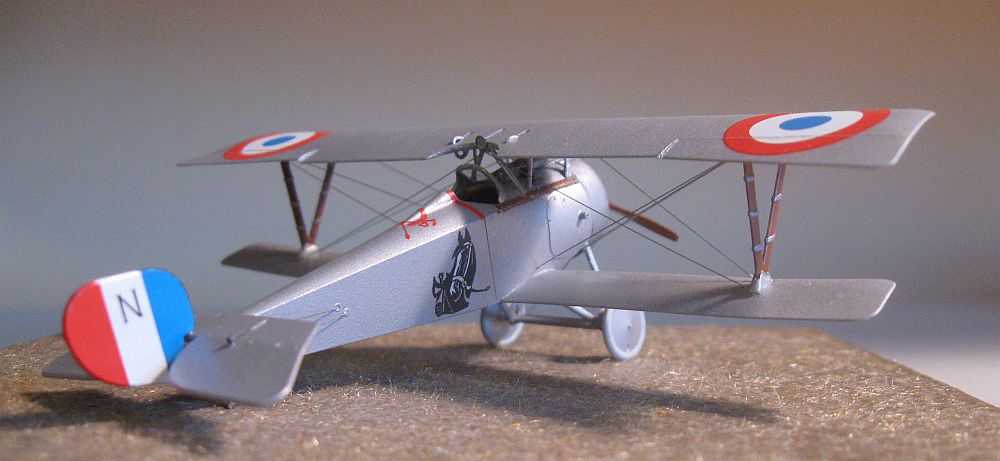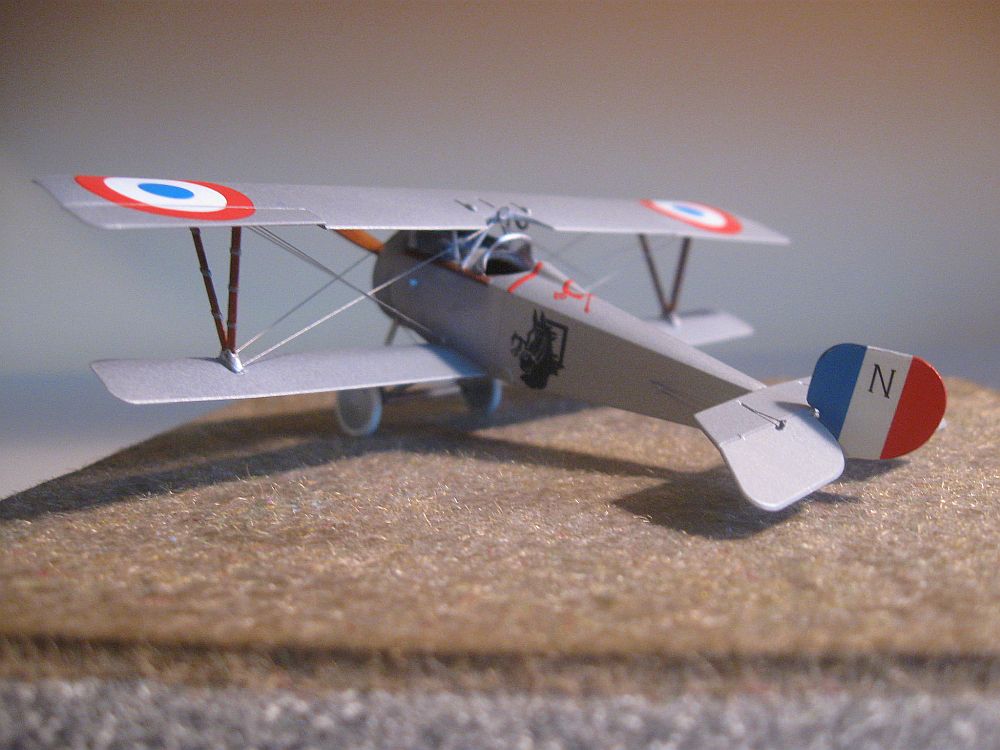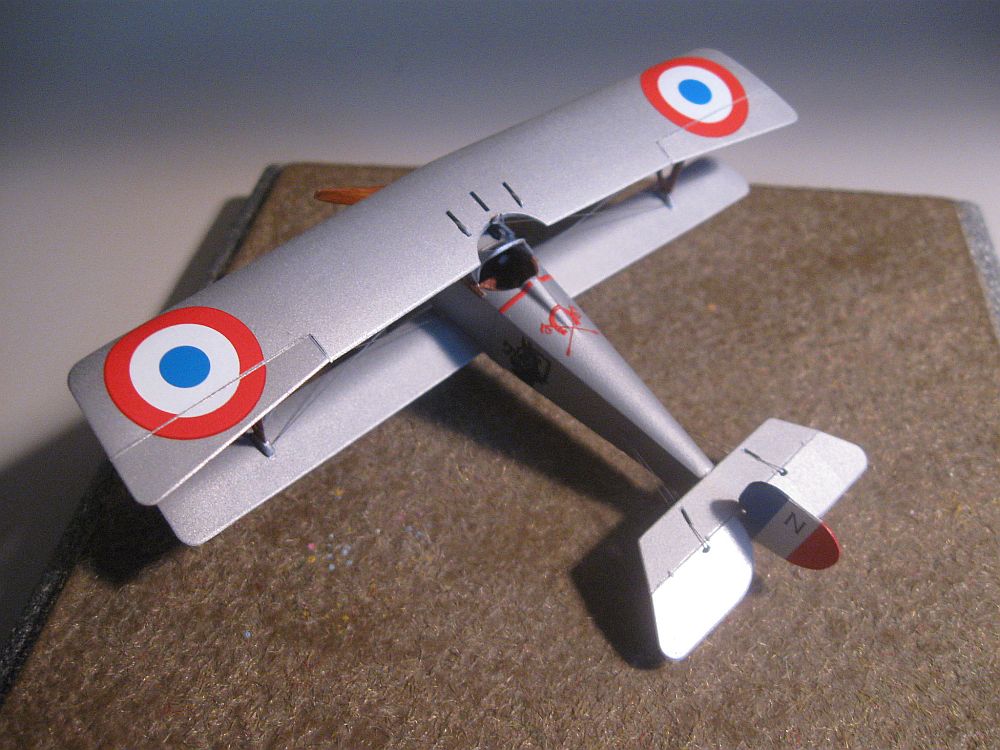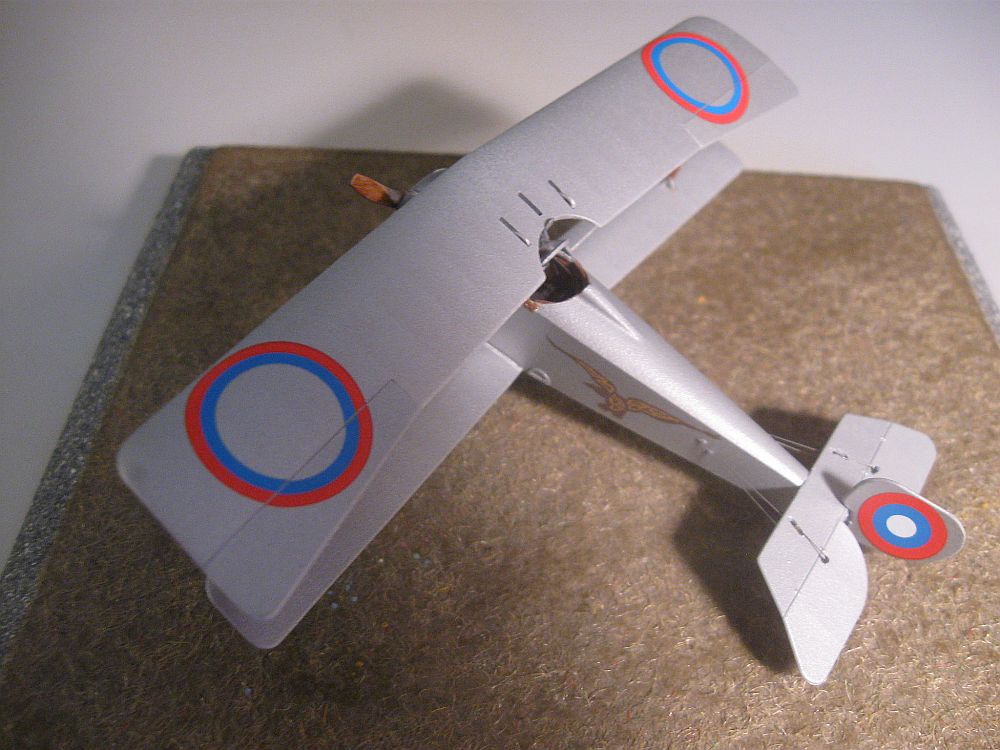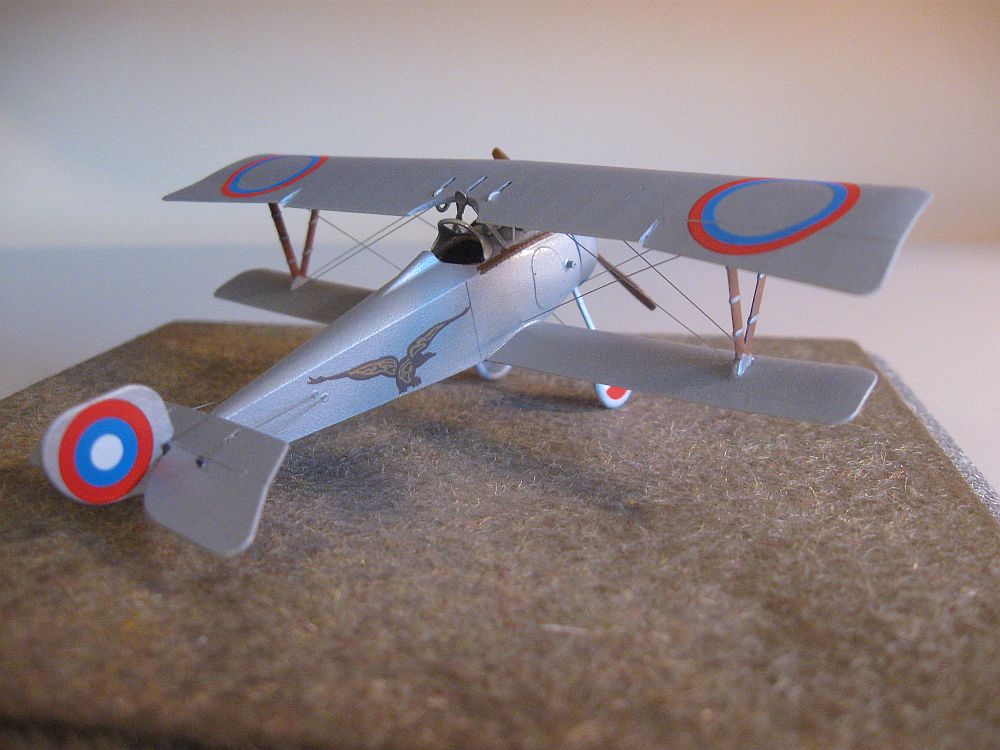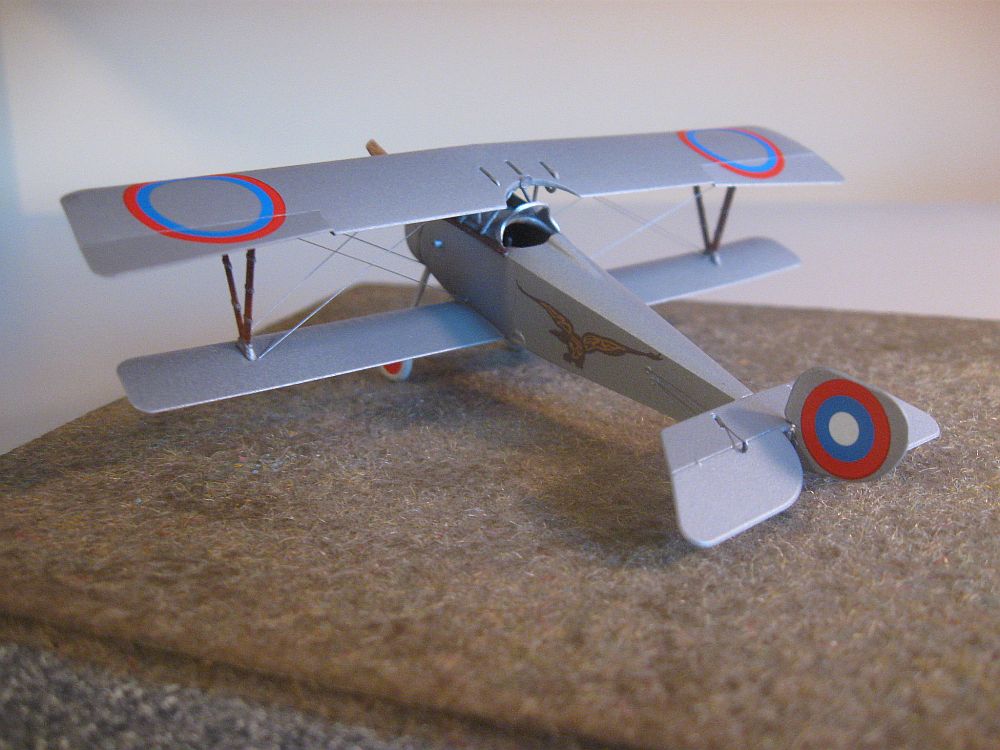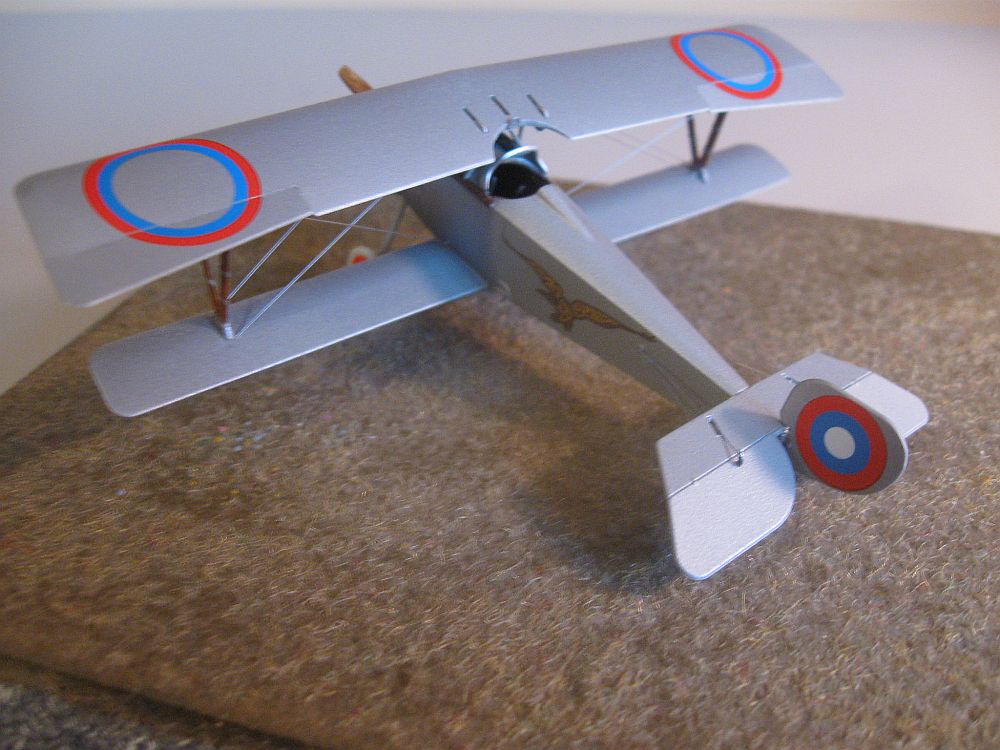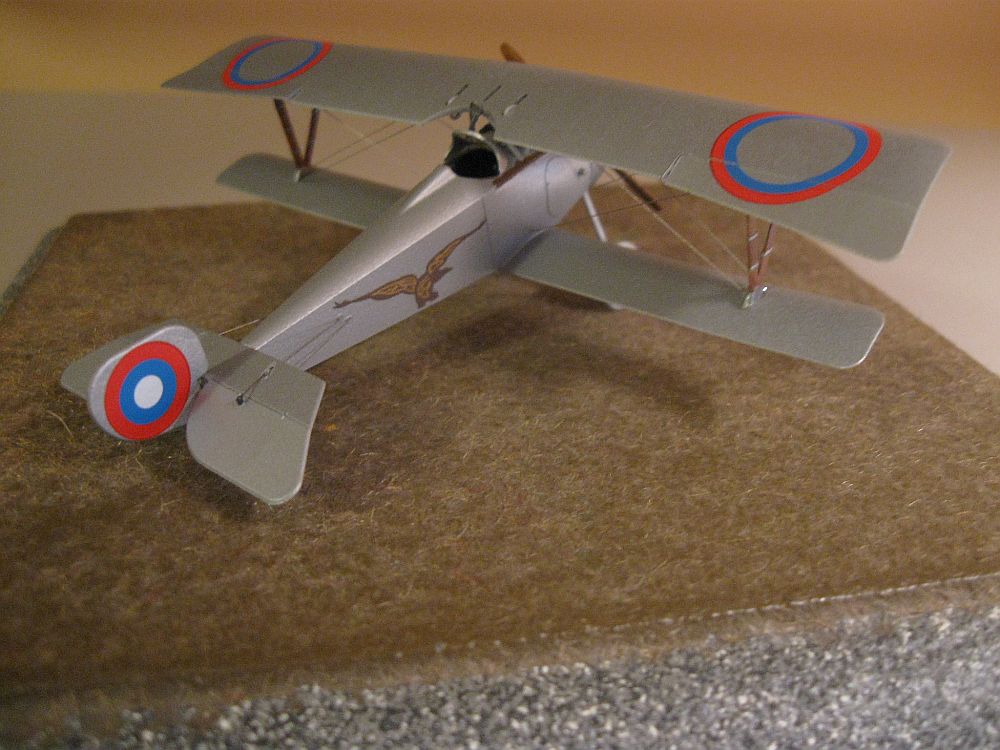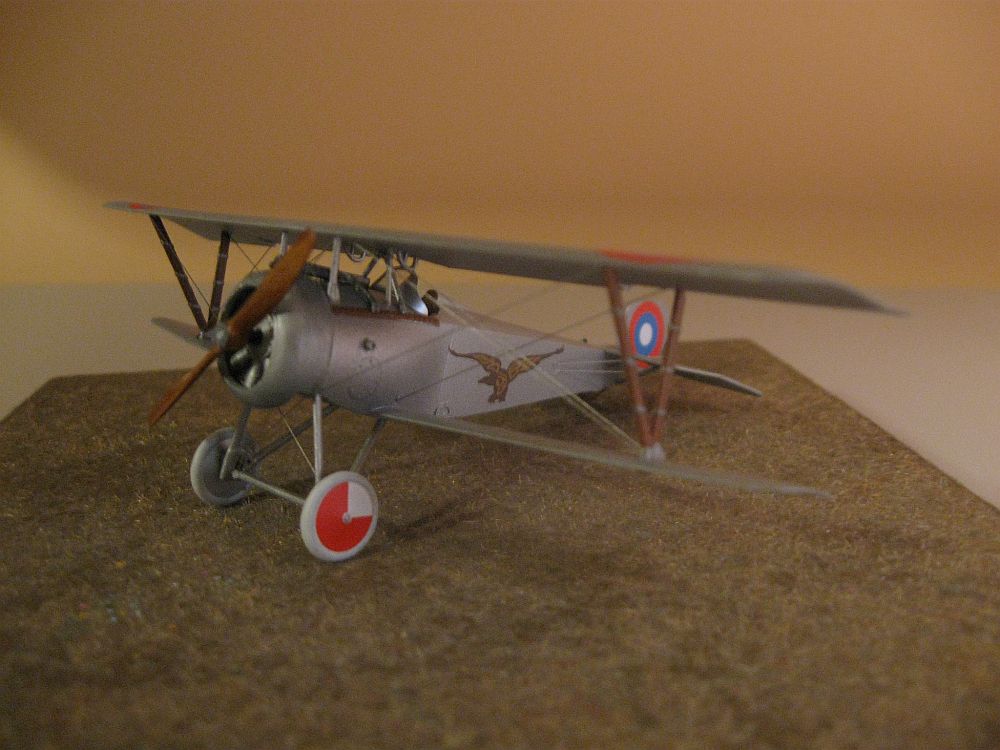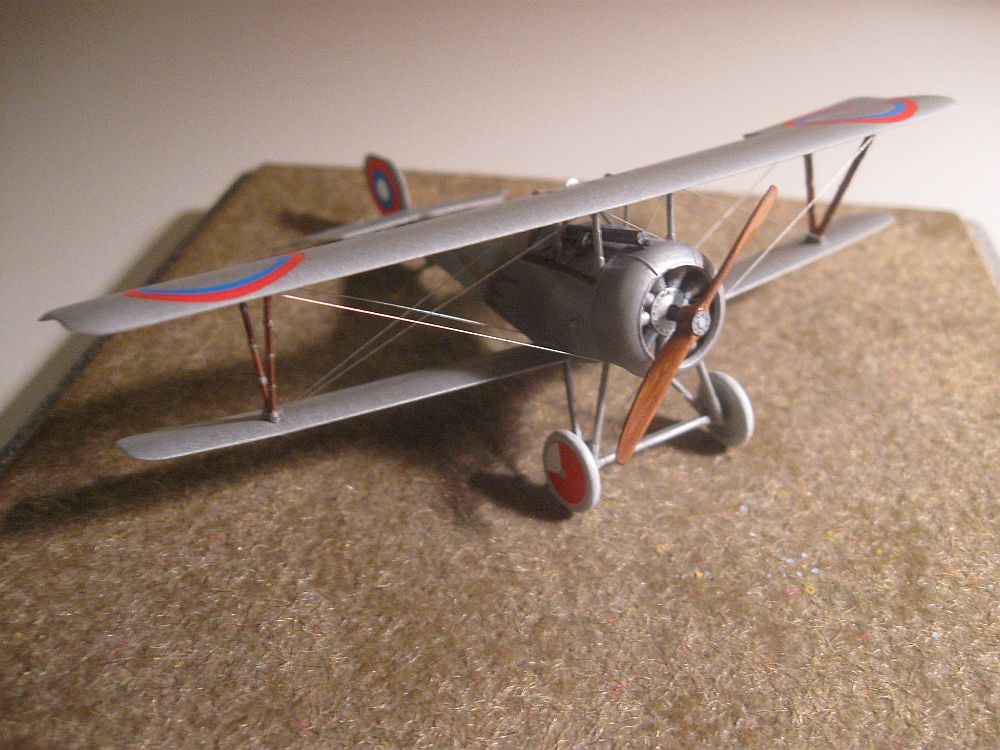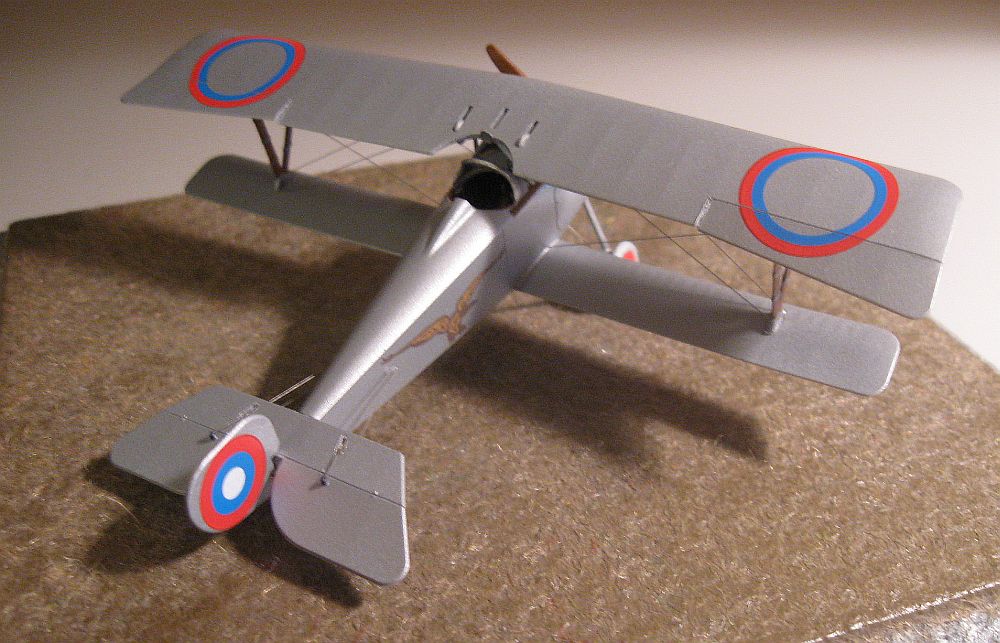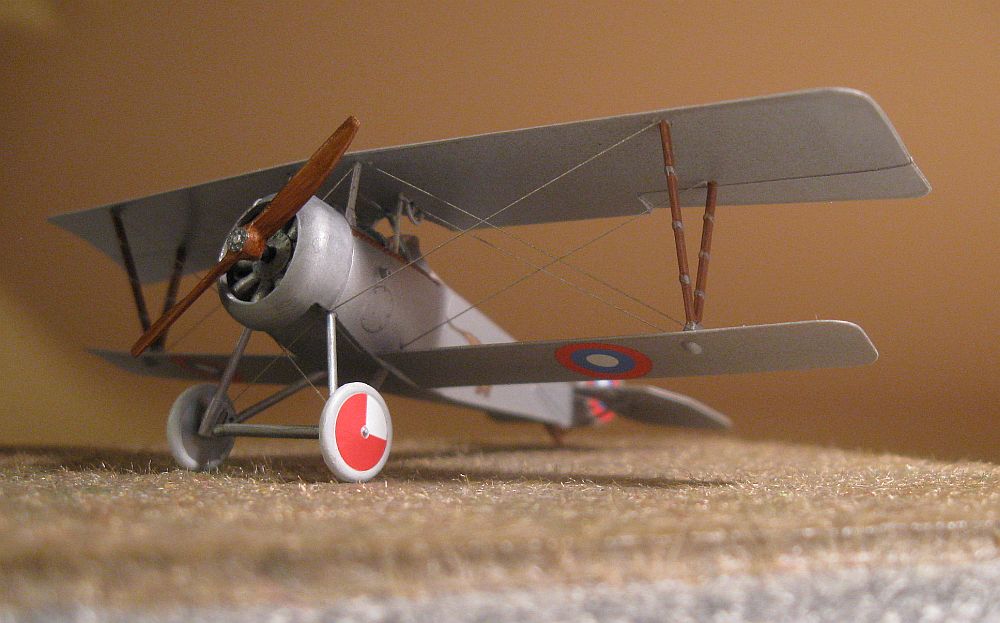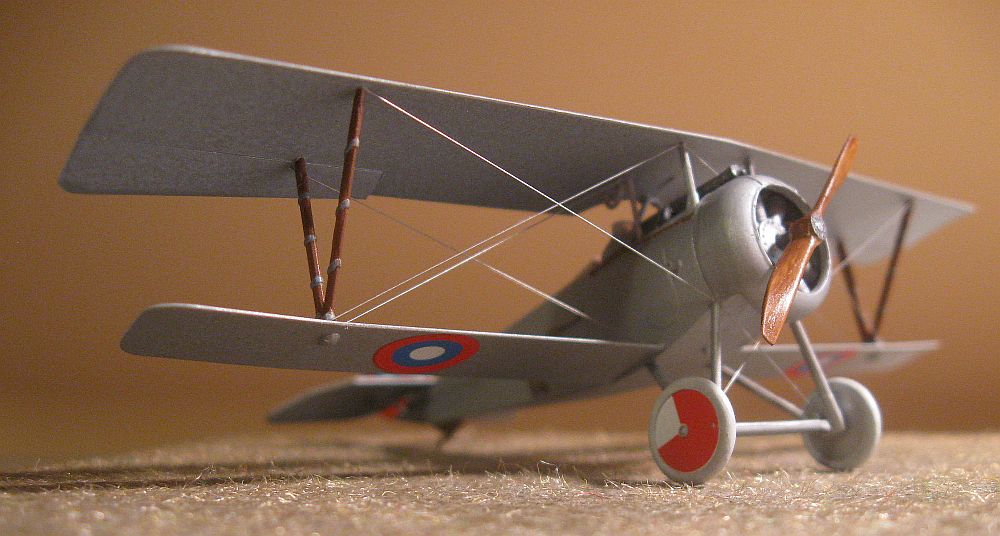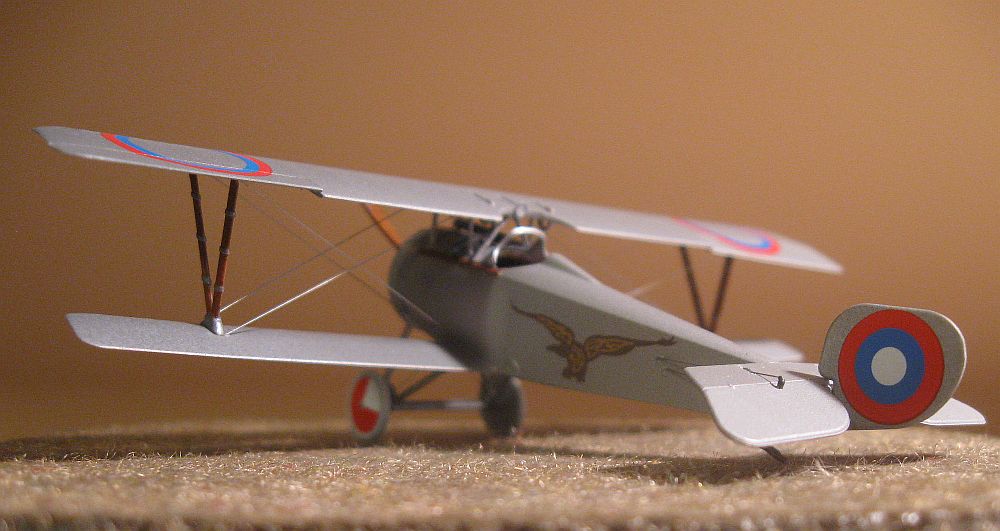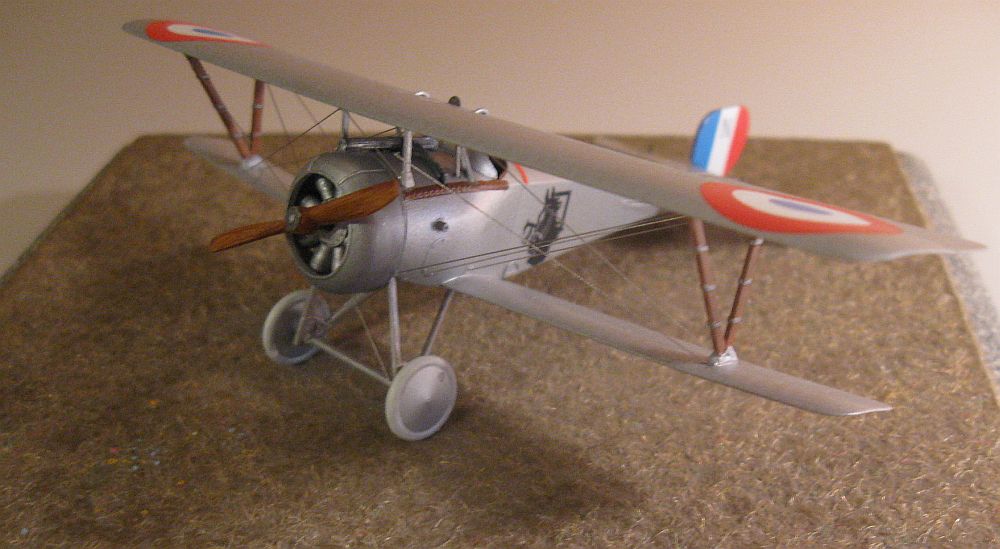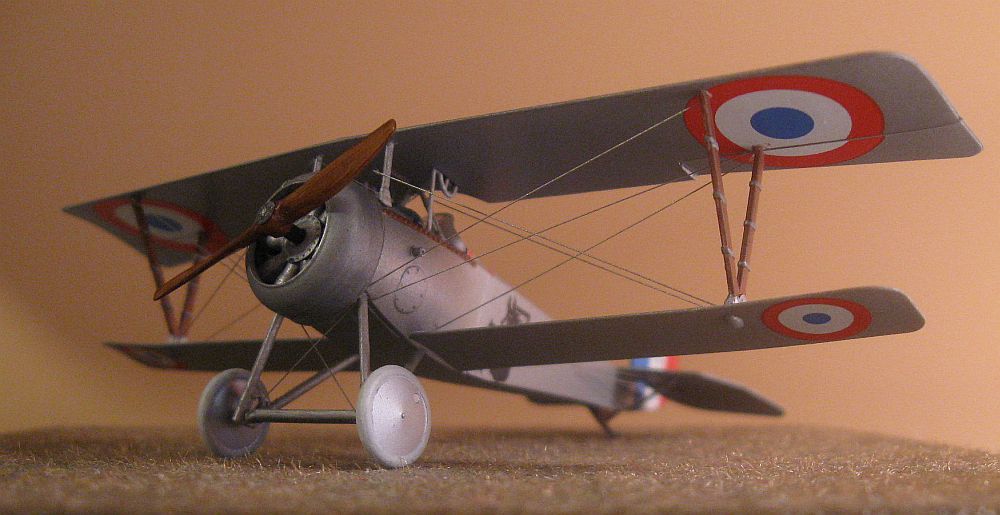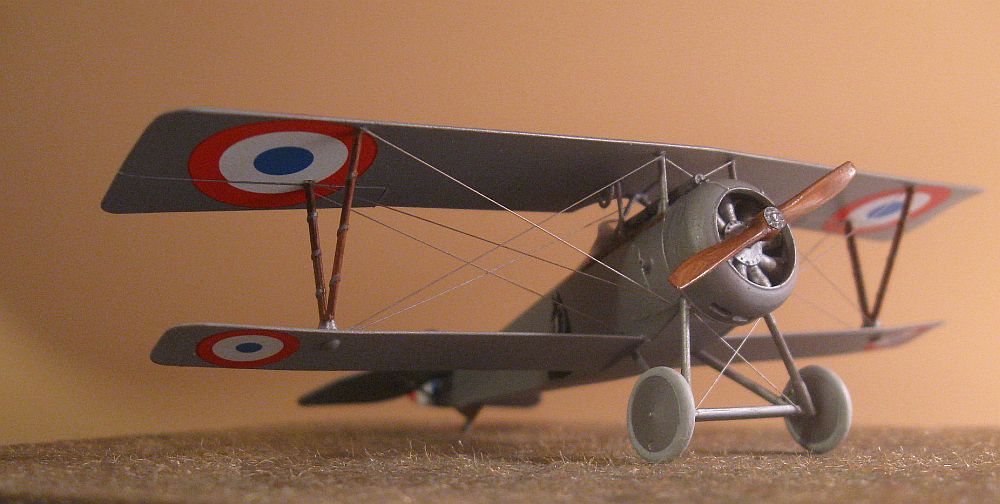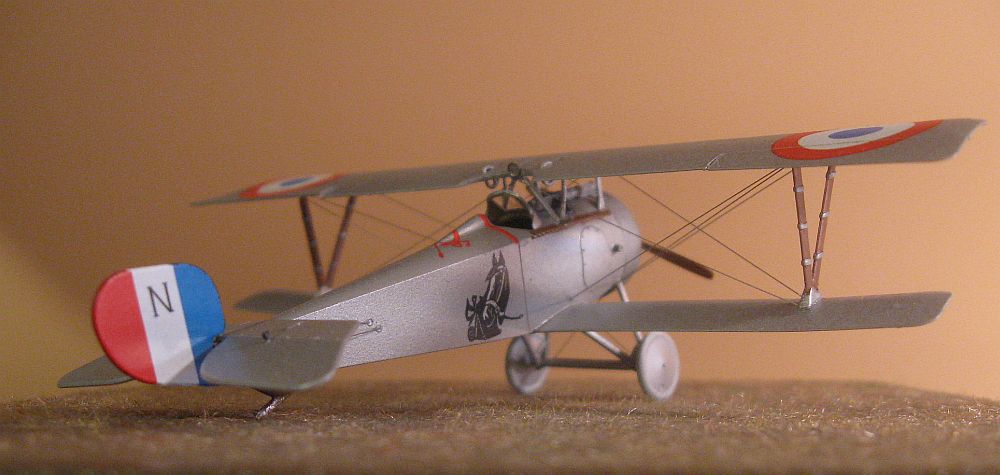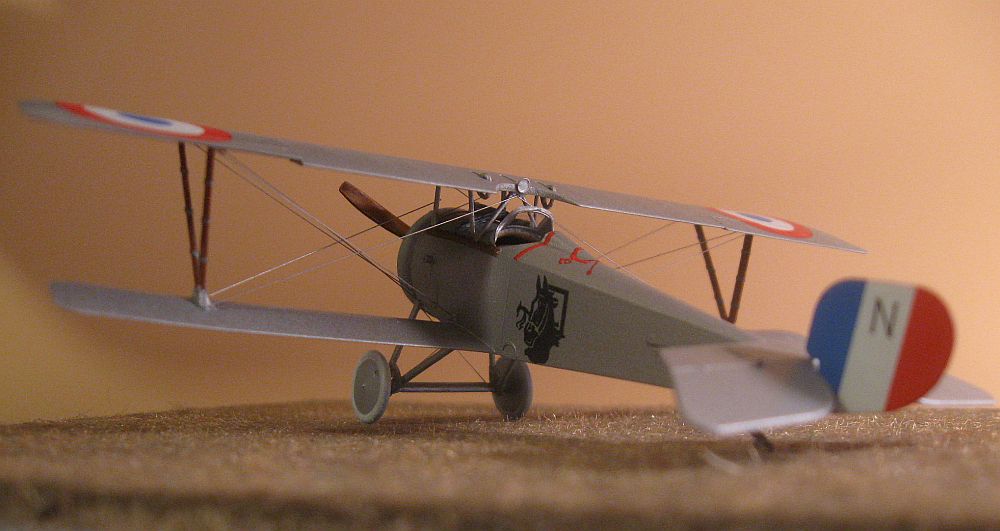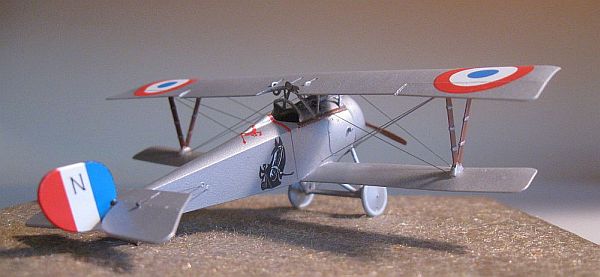
Eduard 1/72 Nieuport 23 “Dual Combo”
By Michael Kendix
I wrote in-box review of the box contents (of kit #7073) in an earlier edition of Internet Modeler, almost two years ago. At that time, I had just started to build it. After a few weeks, I reached the stage where only a few bits and pieces were required – rigging, propeller, etc. but simply lost the urge to build any models. Work, burn-out and general disinterest set in; I cleared up all my modeling stuff, put it away and didn't touch a model for about two years. Along comes the 2010 Christmas break and I have use-or-lose annual leave at work so I take off and after a couple of days at home, decide to finish off the Nieuports.Just to reiterate, this is an absolutely superb product from Eduard. Everything you need to build an outstanding model, except the rigging, is in the box; plastic, photo-etch, decals and instructions.
I followed the excellent instruction closely. All the parts are present for an excellent detailed interior without too much effort – photo-etch does most of it and to be honest, you cannot see a great deal once the fuselage halves are glued together and the top wing is in place. I don't insert the propeller shaft because that just gets in the way of the filling-and-sanding-of-the-fuselage-halves process. The engine itself is a work of art and is easily painted up; this will show once everything is done, so it's worth the effort and concentration. I chose (i) Kibanov's machine from the Imperial Russian Air Force (IRAS), which has French markings, and (ii) the Czech scheme. The former has a couple of drainage holes in the cowl and the latter has the lower piece of the cowl cut away, so you have to fix that. I eschewed the "Bob" scheme – everyone does that! The Belgian cockades look nice but the top wing has to be painted green with the monochrome cockades showing through – unattractive. Once all the fuselage material is inside and the halves glued, you can add the tail parts, engine and cowl. It would also be a good idea to glue on the gun at this point. In order to facilitate the mounting of the top wing, I left the guns off until the end and they were a complete pain in the neck to glue on. Don't do that! Guns then top wing should be the order of the day. However, I do recommend leaving the clear part windshield off until the end; else you will have to mask both sides. I used Polyscale's aluminum for the fuselage and flying surfaces, which I believe is no longer available - more's the pity – the stuff is magic; sprays on great and looks exactly as I imagine a silver doped World War One aircraft should. In preparation for the decals and to protect the paint job, I gave the model about 5 coats of Future; a clear acrylic hand brushed on. Eduard's decals are all excellent as per usual; a magnificent combination of thinness, opacity and strength. They settle down easily and conform well to the surfaces. After the decals are on, I give the whole thing another few coats of Future to protect the decals.The sesquiplane construction means that the top wing is easy to glue, and the various central strut components fit fairly well, not that I didn't have to re-glue couple of them before I was done but that's the price of building biplanes. As biplanes go, this is one of the more straightforward to build so if you don't have photo-etch phobia, this is a good kit for a first biplane model.
The landing gear are fairly straightforward to assemble. Eduard provides a set of masks for the wheel hubs, which is most helpful, and since the Czech scheme has decals on its wheel hubs, I didn't have to worry too much about painting those hubs. The instructions provide an excellent rigging diagram that matches my sources of information on the Nieuport 23's rigging – the same as a Nieuport 17. I rigged the models with 0.005-inch straight wire cut to size, glued with Elmer's white glue, and then gave the whole thing a coat of Testors clear flat to dull down the sheen of the wire and the Future. Once that was complete, I added the various bits and bobs – propeller and rear-view mirror – and that was it!Many thanks to Eduard for this fine product.
Reference
J. M. Bruce. "Nieuport Fighters: A Windsock Datafile Special." Volume 1. Albatros Publications Ltd., 10 Long View, Chiltern Park Estate, Berkhamsted, Hertfordshire, HP4 1BY, Great Britain, 1993.

